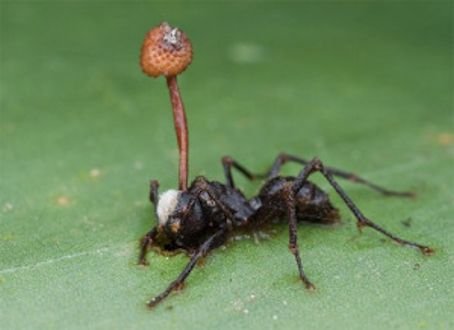
|
Insects Brainwashed by Fungi Parasites - Page 2 Ophiocordyceps unilateralis (Cordyceps unilateralis) Carpenter ant (genus Camponatus) infected with a parasitic Cordyceps When the fungus is ready to sporulate, the mycelia grow into the ant's brain. The fungus then produces chemicals which act on the host's brain and alter its perception of pheromones. This causes the ant to climb a plant and, upon reaching the top, to clamp its mandibles around a leaf or leaf stem, thus securing it firmly to what will be its final resting place. The fungus then devours the ant's brain, killing the host. The fruiting bodies of the fungus sprout from the ant's head, through gaps in the joints of the exoskeleton. Once mature, the fruiting bodies burst, releasing clusters of capsules into the air. These in turn explode on their descent, spreading airborne spores over the surrounding area. These spores then infect other ants, completing the life cycle of the fungus. Depending on the type of fungus and the number of infecting spores, death of an infected insect takes between 4-10 days. ⇦ Back to Page 1 Return to Inspiration On to Page 3 ⇨ |